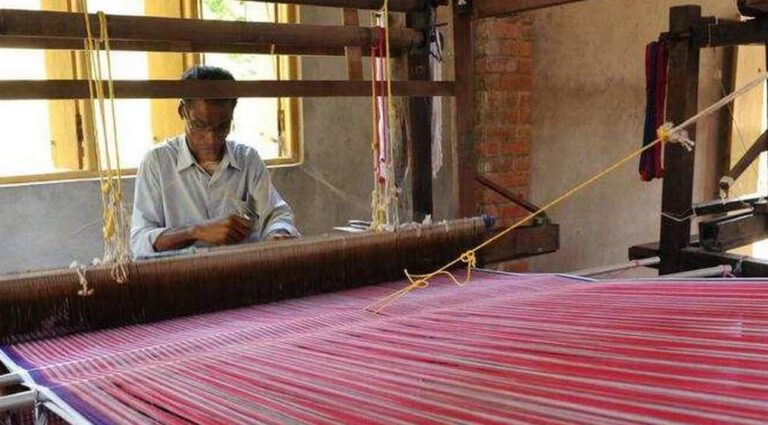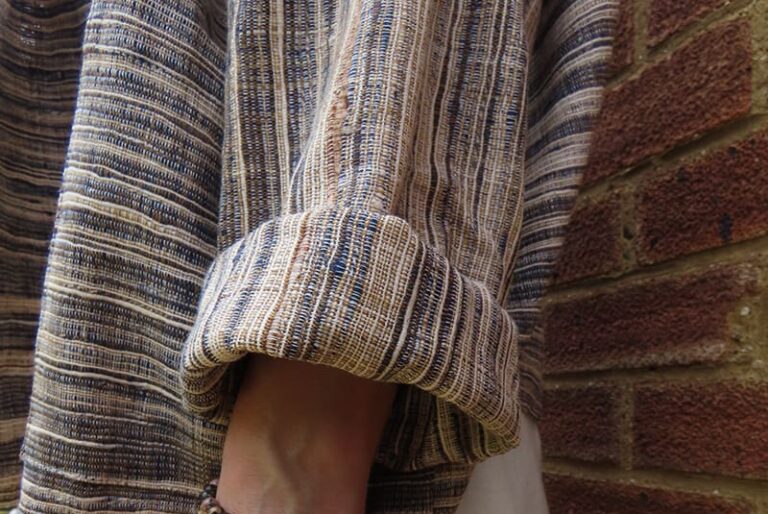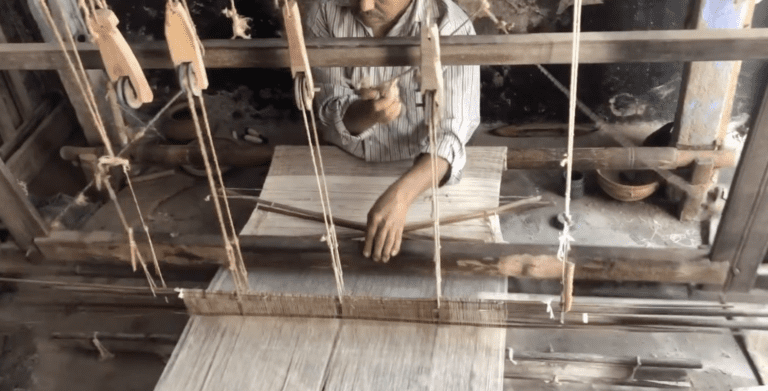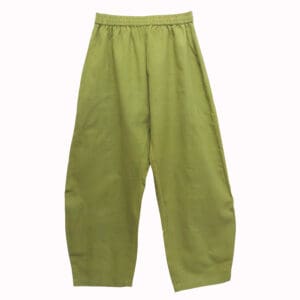Handloom Fabrics: A Symbol of Resistance
In the modern days of fast fashion and mass production, it seems almost unthinkable that you could wear a fabric that went from fine threads to beautifully woven textile all without electricity. This is one of the many things that makes our handloom fabrics so special.

A QUICK HISTORY OF HANDLOOM WEAVING
Handloom fabrics have a rich history that we can trace all the way back to ancient civilizations. The first inklings of handloom weaving started in Mesopotamia around 6000 BCE. Like so many popular techniques, it developed and made its way around the world to regions like Egypt, Greece, and China. There was power that came with the artistry of these handloom textiles, as the finest linens were reserved for royalty and temple priests.
Handloom weaving became more structured in Europe during the medieval period, when the establishment of guilds created a high standard of quality for weavers. This expanded during the Renaissance era, as handloom weaving developed in more sophisticated techniques and patterns and became sought after in the global trade.

One of the biggest changes to handloom weaving came with the Industrial Revolution. The invention of the power loom in the 18th century made textile production a much more rapid process, which led to a major decline in the demand and desire for handloom fabric.
This caused the displacement of many traditional weavers, and was a major challenge to the artistry and craft of hand weaving, much in the way that we still see today with fast fashion.
INDIAN HANDLOOM WEAVING
The artisans that we collaborate with in India follow a long heritage of the craft of handloom weaving, and its ability to create both unity and work.
India’s relationship with handloom weaving dates back over 5,000 years to the Indus Valley Civilization. Going back to the global trade mentioned earlier, there are lots of archaeological discoveries that indicate India as an early and major exporter of fine textiles

THE Swadeshi Movement

British colonization severely impacted India’s handloom industry, as the British flooded the Indian market with machine-made textiles, leading to the decline of local handloom weaving.
In response to this, Mahatma Gandhi started the Swadeshi Movement in the early 20th century, advocating for the use of hand-spun and handwoven fabrics known as Khadi(If you want to see examples of handwoven khadi fabric in the modern day, check out our handloom collection right here, which includes a few khadi cottons!).
The Swadeshi Movement was pivotal in India’s fight for independence, symbolizing and promoting self-reliance and national pride. It was a broader socio-political strategy aimed at economic independence, cultural revival, and social equality.
The term “Swadeshi” means ‘of one’s own country,’ and the movement aimed to encourage Indians to boycott British goods and revive domestic industries. Gandhi urged every Indian to spin their own yarn and wear Khadi as a mark of resistance and self-sufficiency.

Gandhi’s advocacy for the handloom was rooted in the bigger picture of his economic philosophy of self-sufficiency and sustainable living. He criticized the industrial model of development that prioritized large-scale production and consumption, leading to social and economic inequalities. Instead, he advocated for a decentralized economy where small-scale industries and cottage crafts would play a significant role. The handloom sector, according to Gandhi, was ideal for promoting this model of development. Sounds an awful lot like today’s slow fashion movement!
Visualising the loom

THE PIT LOOM
Our handloom cottons are made using a pit loom. A pit loom is operated by two peddles, and is situated on the ground / floor where the weaver sits in a ‘pit’. Fabric created with a pit loom is considered a high quality weave as the tension between the ground and the speed make the fabric breathable and highlights the character of the fibre.

And something familiar…the tapestry / Frame loom
I wanted to include this loom as it is the simplest form of hand weaving, and might be the most recognisable! If you have ever used one of these, you’ll be familiar with the movement of weaving the weft threads forward and backward through the vertical warp threads. This is a great way to simplify and visualise what the more complex handloom machines achieve, as well as a really accessible way to try weaving yourself!
DID YOU KNOW?
Our handloom fabric suppliers at Woven Fabric Studio shared a few facts about weaving that seem perfect to end with here!
- Handloom fabric is the only fabric where the play of texture is so unique that no two fabrics will be the same. This makes each handloom garment completely unique and exclusive.
- 70% of the artisans involved in the process of yarn to fabric production are women.
- Handloom fabric is environmentally friendly and sustainable. The process involves no environmental pollution and is done without electricity, making it incredibly natural start to finish.
- Supporting and buying handloom fabric enables full development of locally available raw materials and human resources. It empowers weavers, empowers women, and generates employment.
Take a look at some process videos from Woven Fabric studio here:
Looking for your own handloom treasure? Take a look at our collection below...
-
Sale!

Handloom Cotton – Compost green – Banana Pants
£89.00Original price was: £89.00.£55.00Current price is: £55.00. Select options This product has multiple variants. The options may be chosen on the product page -

Pintuck Shirt – Undyed fine Handloom Cotton
£70.00 Select options This product has multiple variants. The options may be chosen on the product page -
Sale!

Handloom Cotton – Summer Stripe – Banana Pants
£89.00Original price was: £89.00.£55.00Current price is: £55.00. Select options This product has multiple variants. The options may be chosen on the product page -
Sale!

Green Banana Pants – Hand Woven Cotton
£89.00Original price was: £89.00.£55.00Current price is: £55.00. Select options This product has multiple variants. The options may be chosen on the product page
